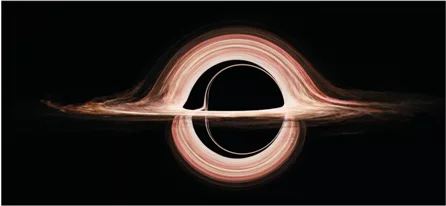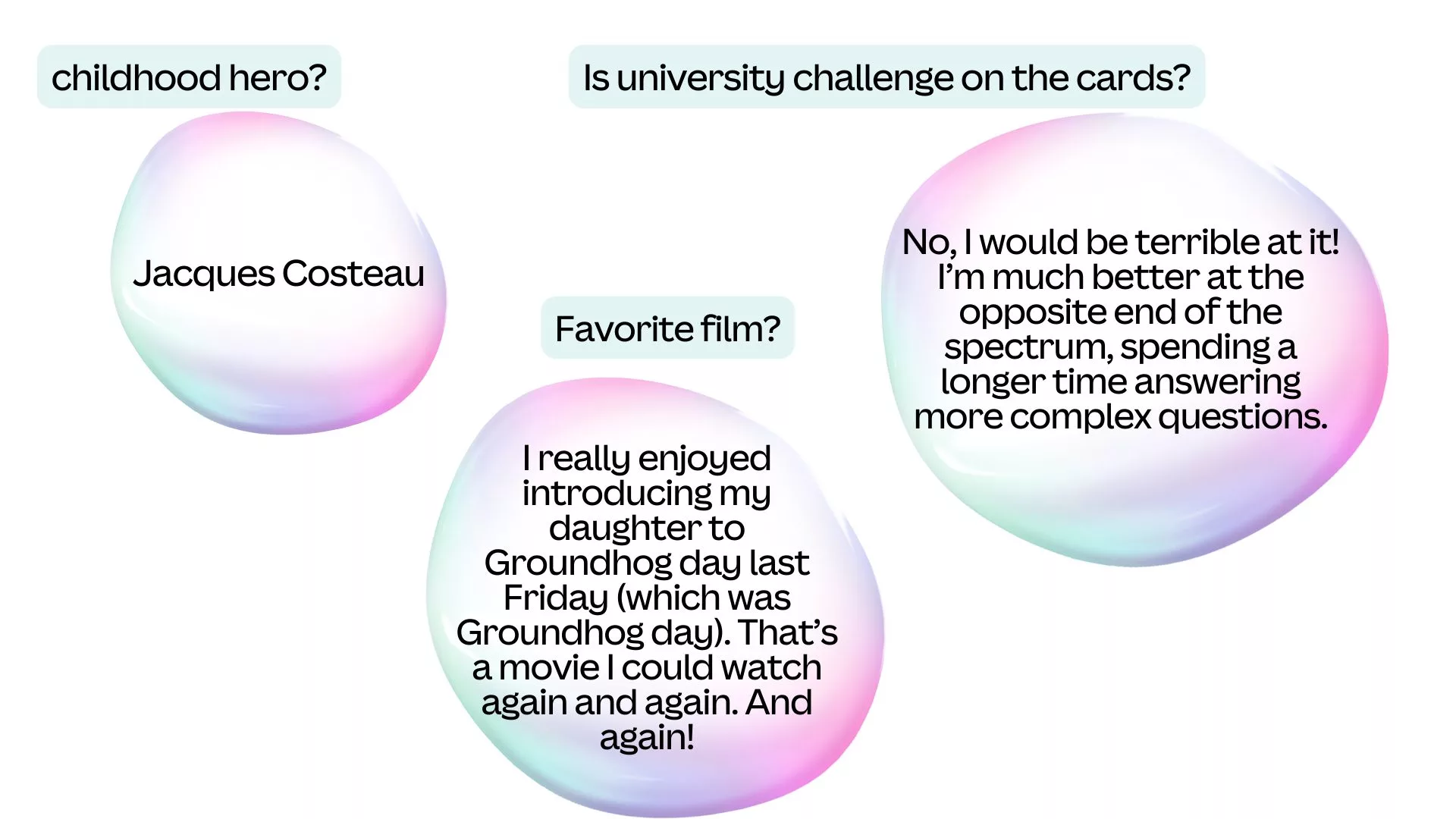Have you ever wondered how James Bond jumps out of an aeroplane? How Interstellar’s astronaut Cooper enters a black hole? How Rocky rides the pie machine in Chicken Run? If you’re a humanities student, let me tell you that none of this was real. James Bond didn’t almost plummet to death, Matthew Mcconaughey wasn’t sent into a black hole and, sorry to say it, Chicken Run isn’t real. The creator behind it all is the Chief Scientist at DNEG (Double Negative), Oliver James.
Oliver has created visual effects for Christopher Nolan’s Tenet, Oppenheimer and Batman Begins, along with a few James Bond and Harry Potter films amongst his other works. His involvement in Interstellar won him an Oscar for visual effects and awed the audiences with its simulation of a black hole.
It was through a passion for photography, knack for computing and deep understanding of physics that Oliver was able to find his niche. Not unlike Harry Potter, he says, “I was one of those kids who had a dark room under the stairs where I used to do my black and white photography.” During his time at Christ Church college, Oxford, Oliver enjoyed Physics and specialised in courses on light. “I was really interested in things like modern optics and laser physics and atomic physics. But after I graduated, I wanted a bit of a break from that, and wanted to try photography as a profession.” A leap of faith landed him a job as an assistant in a photographic studio with only two other people on the team. “You sweep the floors, make the coffee, lift the lights, but you also learn absolutely everything about the photography business.”
Harnessing his skills with Physics and Maths, Oliver’s approach to complicated problems is to abstract it into a way you know how to solve. Except the damp, dark rooms of Christ Church: “There was a photography club in the basement of Christ Church and my pictures would come out muddy. I did finally realise that this was because it was a cold, damp cellar. You get your chemicals the right temperature but 10 minutes later, they’ve dropped down to 5 degrees rather than 20.” It was a step towards learning how to do things properly and fostered an appreciation for the right conditions. Conditions to create a black hole perhaps.
Creating something out of thin air, something you’ve never seen before, and making it seem so realistic that you could almost say that you have really seen it, is no small feat. Oliver talks about his most challenging and rewarding project of them all: Interstellar. Although it was 3 years before the first photograph of the black hole, Oliver was able to simulate the prettiest picture to date.
“Kip Thorne (Nobel Prize winning physicist) was one of the writers for Interstellar. That means that he wrote a short draft of what the movie could be and got involved very early on, and he wanted to stick to the premise that the movie would incorporate as much physics as possible while keeping it as realistic as possible. He sold Christopher Nolan that idea. So when they asked us to look at the black hole, he was available as a science advisor. There was one point, however, that changed things for me. At an early meeting, we were brainstorming about how you might depict a black hole. He was trying to explain over the telephone what would happen and what light does. At one point, I said, “Could you send me an equation describing the path of a ray of light around a black hole into an observer’s eye?”. And that must have struck the right note, because it’s literally 24 hours later that I receive a paper with all the equations I needed. And I realised that if I gave him very, very precise questions, he could give me, very, very, very precise answers to them.”
So here’s ‘How to Create a Black Hole 101’: “we started off by modelling just a black hole with no spin which makes the equations much simpler. But then there’s a plot point which needed the degree of time dilation to be right.”
For every hour spent near the black hole, 7 years passed on Earth.
“Kip Thorne made the calculations that unless the black hole has a particular spin you won’t have a stable orbit. In his mind it would be spinning at 99.8% of its maximum possible speed, but this breaks symmetry and makes the equation more complicated. So we went down that rabbit hole and designed to see what a spinning black hole will look like. And it’s actually quite subtly different from a non-spinning black hole. It looks slightly egg shaped rather than spherical.”
Christopher Nolan didn’t like the look of that, so they went 60% in the end.
“If you look very, very closely, it’s in the movie. It’s that attention to detail that led us down wonderful rabbit holes, and it almost made that part of the movie-making develop a life of its own.”
Films can bring great things: “about a year after the film came out, Kip Thorne’s project, which is LIGO (Laser Interferometer Gravitational-wave Observatory), detected gravitational waves. He won the Nobel Prize off the back of that. It almost felt like the visualisations of black holes brought this idea that black holes are not some kind of funnel in space, but actually spherical objects that might collide and bash into things. I think it’s helped the public understand, maybe, the significance of his discovery in gravitational waves.”
In a slightly different universe, James Bond, in Quantum Of Solace, jumps off his plane with Camille, magically touching the ground undamaged. But what do you do when hair dryers aren’t enough to mimic the wind?
“They thought they could film it in his wind tunnel, to get something more convincing. They also want to be able to do more dynamic camera movements in a very limited space. So we came up with this idea of filming it from multiple camera angles, and then recreating the geometry as a post process. A lot of the challenge in that was coming up with a way of designing software that would take eight Dalsa cameras. These were some of the early digital high res cameras used on the Mars lander.” Proving again the potential for film’s imaginative impact in science.

When sitting through a 2 hour movie feels like a bit much for our attention span as a society attuned to youtube, the number of hours underlying the 2 that we see are more than one could imagine: “In some ways, it sort of sums up moviemaking. What you’re seeing is a distillation of millions of man hours or person hours into a two hour movie.” Speaking of behind the scenes, Ron and Hermione weren’t the only people that fell in love in Harry Potter: “In fact, I met my wife on the set of Harry Potter. We both were working at DNEG in different departments. She was going to be operating the Disney Animation and my role was working on a system for overlaying the character for Hagrids’s half-brother. So we ended up going to the studios, probably every day for a couple of months, or working on the scene. I suppose on the film set there’s quite high pressure for very short amounts of time. A lot of the time you’re sitting around waiting. Hanging out, drinking tea, eating cakes.”
Currently, Oliver is generating excitement with the integration of AI in VFX. “I didn’t really know what I wanted to do until I left university. Photography was something I’d always been interested in, so I took the plunge.” It’s often not easy to know what you want to do with your life, and much harder when your relatives ask. Whether you wish to remain an academic weapon for life, desk away crunching numbers on your laptop or bring your vivid imagination to life, there is room to do it all – if you’re anything like Oliver.



